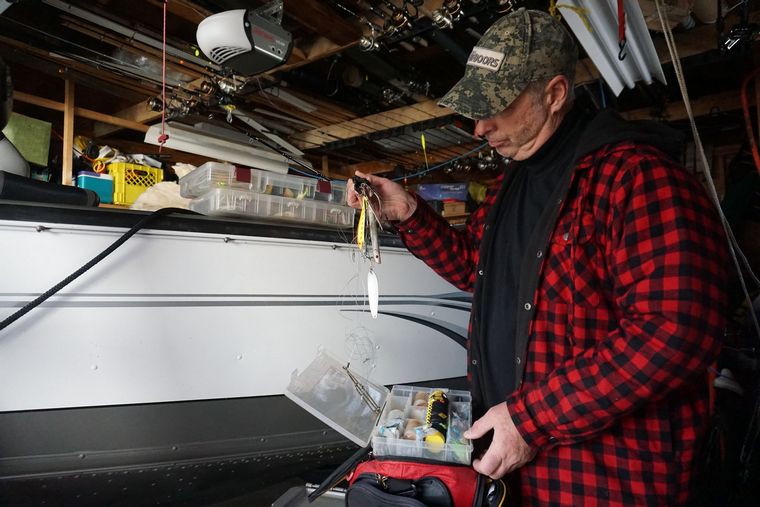
When fall comes, and the hunting bug bites, my fishing tackle gets tossed aside fairly rapidly. Sure, there’s usually a late-season muskie troll, maybe even a quick hike into a stocked brookie lake. But by October, it’s mostly fur and feathers for this columnist.
The problem is this: the quick transition from water to woods means leaving balls of lures, line, and rain gear scattered about my garage and basement. Then, when the hunt is over, the crossbow is put away, the trail cams are heaped in a box, and the ice-fishing gear comes out. This transition creates more chaos, especially when it comes to larger hunting-related items, like ground blinds. As often as not, mine are still iced-up and shoved into the garage with chunks of ice attached. Not optimal, I know.
When spring finally approaches, a daunting task looms — getting all that cast-aside gear organized. It’s like a bad dream when I find myself wading into the garage or basement storage room in the hopes of making sense of the chaos. Every year, I promise myself the tackle cyclone won’t happen. Every year, I face the music one more time.
Spinner-rig tumbleweed
Something that surfaces every spring is the “spinner-rig tumbleweed.” Despite the purchase of numerous tackle savers — and a lot of time spent trying to keep the things organized in the boat — a certain number of spinner-rigs always end up in a ball. It should be easy to unravel these clusters, but that’s rarely the case.
I’ve literally spent hours trying to pull them apart, fussing over the mess of line, beads, and spinner blades like they are an angling-inspired Rubik’s Cube. As often as not, frustration prevails and the scissors come out. With a few well-placed snips, the makings of several new spinner rigs are created from old ones. Frustration is replaced by relief.
Fly trap
Another killer job is the fly vest/fly box sort. It is absolutely amazing what a mess fly boxes can turn into by the end of the open-water season. And God forbid if you didn’t properly dry those big pike and trout streamers before you closed the lid for the season. Rust is us. Sorting through fly boxes is often full of weird little surprises. The sweet little bass popper you had been madly searching for somehow made its way into the boat box with pike streamers.
It’s also quite amazing how every single fly in a box can come detached from the foam hook holder. When I guide, I’m always impressed when an angler cracks a fly box open that looks immaculate, like it just came out of a catalogue. My fly boxes rarely look like that even after I’ve sorted them, never mind late in the season. It never hurts to try, though. A couple pieces of masking tape and a Sharpie help me remember what box has what flies in it as well. Late fall is a good time to update those reminders.
Reel maintenance
My last pre-season fishing task is to check each and every rod and reel that I expect will be put in service. If I’ve been on the ball, the reel drags will have been backed off before they were put into the rafters. However, it pays to check both the drag and the line on every reel. Not every reel will need new line, but the ones that get the most use from me almost always get re-spooled.
At minimum, I take several yards of old line off every reel, just to be safe. On spinning reels, take off the spools and check for gunk and sand. A soft cloth or even a Q-tip can do wonders on a dirty reel. In some cases, adding a little reel oil to the spindle will help. A little will go a long way.
Hunting cleanup
And in case you think the hunting stuff gets ignored, late winter is the time for sorting that. As often as not, I will make sure all ground blinds have been thawed and dried out. If you have a heated garage (I don’t), you can do it there. However, the laundry room in our house has doubled as a ground-blind hangar more than once. My long-suffering spouse picks her way around the camo hunting tents with nary a word.

As long as the floor is dry (we do have a drain!), they’re gone within 12 hours. This dry-out session is a good time to check for broken support rods and rips. Late-season snow can cause support rods to break. The fibreglass driveway marker poles sold at hardware stores make for good replacement rods. Yeah, they are often orange or yellow, but they do the job. Drill out the hub and cut the pole to length with a hacksaw. You’re back in business.
Some of you will likely read this and relate. Others may be appalled by the lack of order in my outdoor life. All is good. The bottom lines is this: it doesn’t matter whether you are ready at the start of the season or the end, just make sure you are ready.
It’s worth the effort.
Originally published in the Jan.-Feb. 2020 issue of Ontario OUT of DOORS magazine.


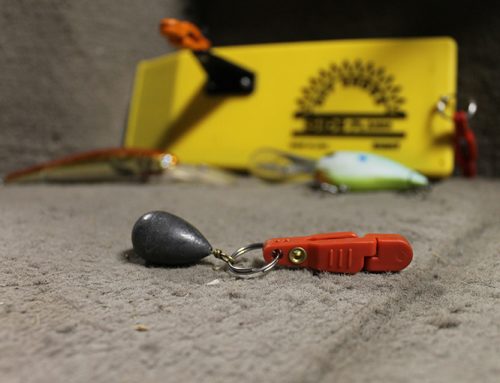
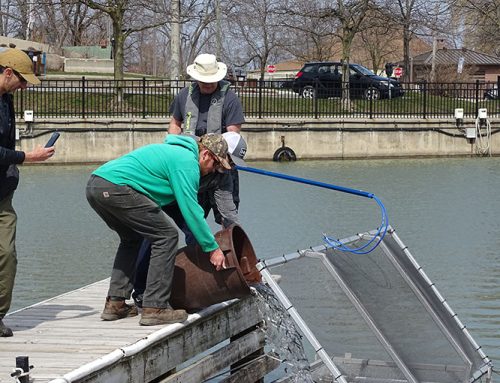
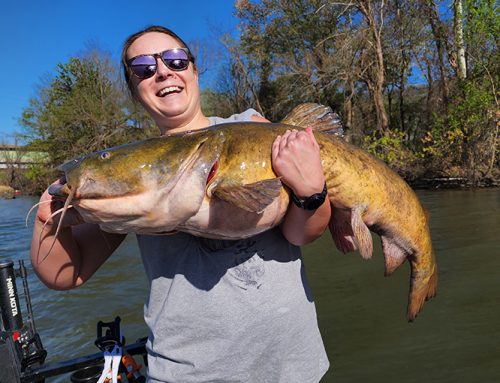
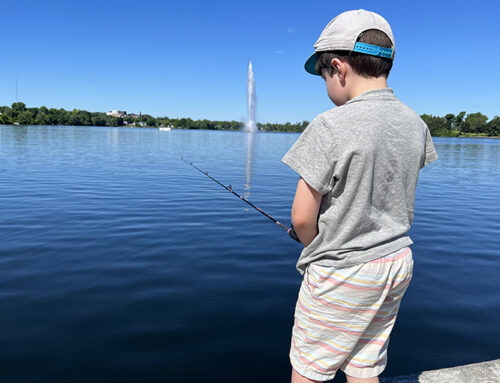
Leave A Comment